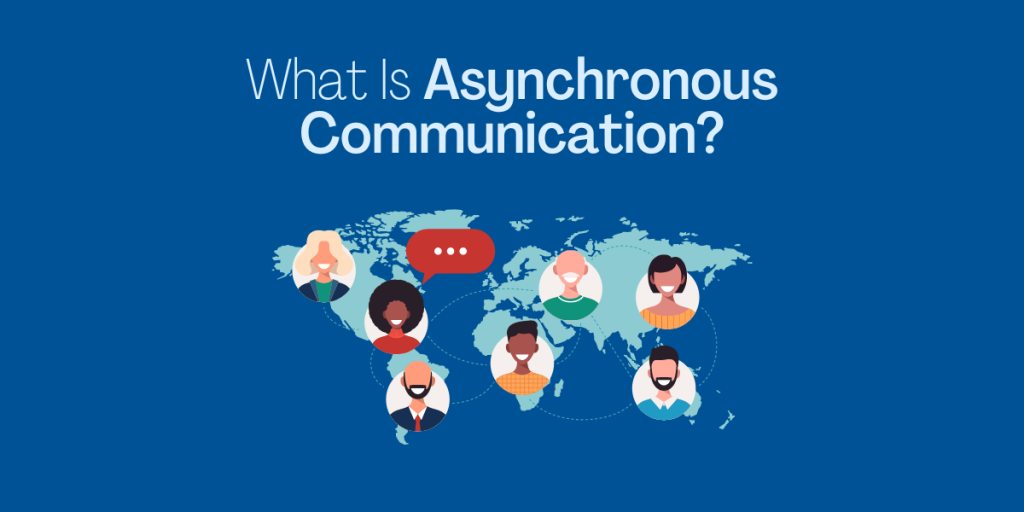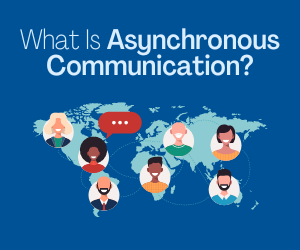What Is An Example Of Asynchronous Communication?


When you start working remotely, one of the things you need to master is new forms of communication and one of the concepts you may come across is the idea of “asynchronous communication” but what does that mean, exactly?
Well, let’s take a closer look and find an example or two too.
What Is Asynchronous Communication Vs Synchronous Communication?
There are two main types of communication synchronous and asynchronous communication and they only differ slightly.
Synchronous communication is carried out in real-time – so, for example, a Zoom call or a phone call would be an example of this kind of communication.
Asynchronous communication, on the other hand, is communication that does not happen in real-time.
Some Examples Of Asynchronous Communication
So, examples of remote work asynchronous communication could include e-mail conversations, instant messaging, and using any of our favorite communication tools for remote teams, remote collaboration tools, and remote workforce management tools.
The Benefits Of Asynchronous Communications
The benefits of asynchronous communication aren’t always clear and there’s certainly no “best” form of communication for every given situation.
However, the clear benefit of async communication in terms of project management and team member management is that you don’t need them to be present and provide an immediate response.
Asynchronous communications thus offer a communication tool for managers of remote teams to communicate their thoughts and important ideas without having to involve everyone on the team at the same time.
This is clearly a big deal for remote workers, who may not even be working in the same time zone as their leaders and managers. Thus, most project management tools are built as asynchronous communication tools to best facilitate remote team working.
Video messaging, video conferencing and video recording still have their place in these remote teams, of course, but they’re best reserved for deep work where there’s a genuine need for simultaneous interaction that asynchronous messaging isn’t tailored to cater for.
This also helps to instill confidence in workers. Who can often find phone calls and video chats intrusive and “pressurizing”. Asynchronous communication means that they are trusted to communicate their own needs and feedback in their own time.
Choosing The Right Tech Stack Matters
If you want the type of communication management software that you use to work with your specific work environment, you need to look at using asynchronous communication allows and how asynchronous work might be carried out as well as how you will manage real-time communication and ensure that you choose the right tools for the job.
There is no “one-size fits all” messaging tool for every set of work hours, and which will facilitate your employees’ every need over different time zones. You may need to experiment with tools like Slack and Skype to get what works for you and your employees.
Async communication is the way forward when it comes to sharing knowledge and messages around your company, particularly, if you work remotely.
Tools that facilitate this kind of communication ensure productivity and that tasks are done when they need to be.




